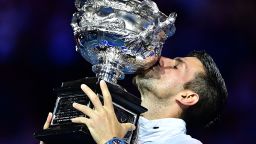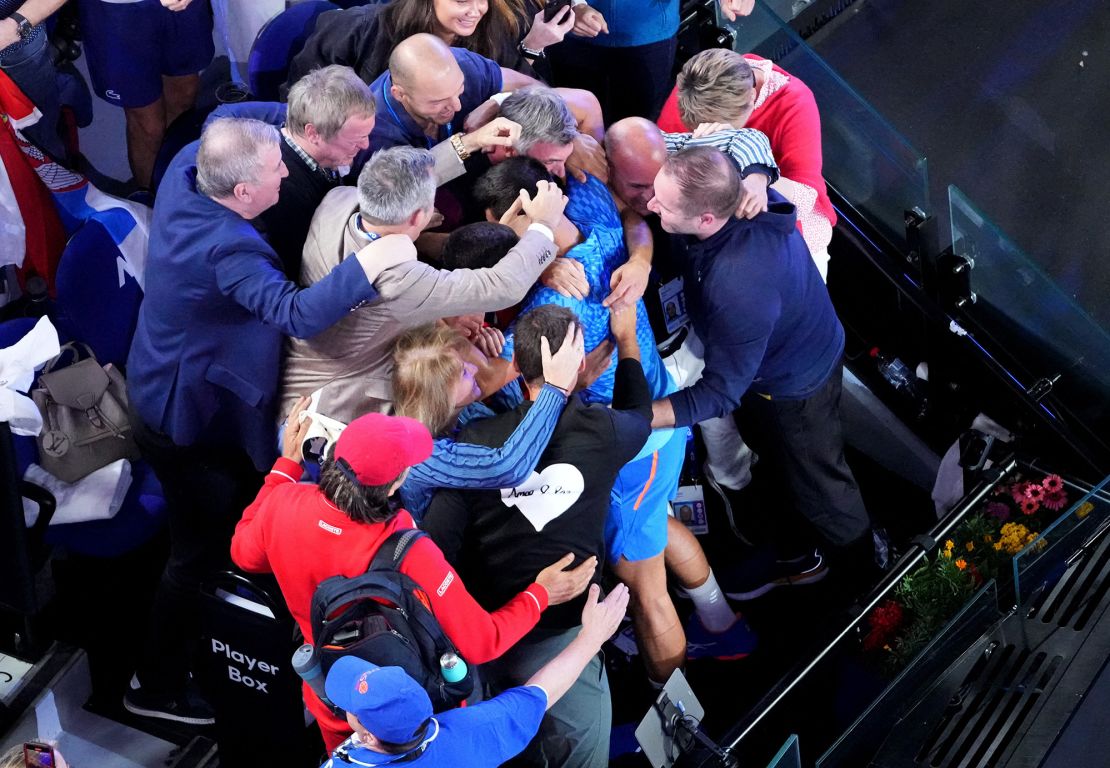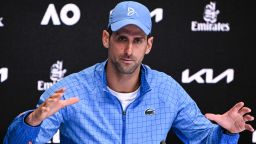For nearly twenty years, we’ve grown accustomed to Novak Djokovic triumphing in grand slams. However, witnessing the world No. 1 break down in tears on the floor as he celebrated his Australian Open victory with his family and team was unprecedented. Later, he revealed he had experienced an “emotional collapse.”
His straight sets victory over Stefanos Tsitsipas in Melbourne on Sunday carried significant historical weight. It marked his 10th Australian Open title, making Djokovic only the second man to achieve more than 10 titles at a single slam. Moreover, it was his 22nd grand slam victory, matching Rafael Nadal’s men’s record for major wins. This triumph also propelled him back to the world No. 1 ranking, extending his record to 374 weeks at the top spot.

Even as he returned to his seat on the court for the trophy presentation, Djokovic hid his face in a towel, the television cameras picking up the sound of his continued crying.
In his post-victory interview with reporters, he clarified that his emotional display wasn’t solely a reaction to his achievement, but also a response to the challenges he had faced in recent weeks.
The 35-year-old reflected during his news conference, saying, “When I went into my box, I emotionally collapsed and teared up, especially with my mother and my brother when I hugged them. Up until that moment, I had been holding back, not allowing myself to be distracted by off-court issues or the challenges of dealing with an injury. There were things happening off the court that could easily have disrupted my focus and my game.”
“It took immense mental energy to remain present and focused, taking each day as it came, and pushing myself to see how far I could go.”

Last year, Djokovic faced deportation from the country due to his Covid-19 vaccination status, preventing him from defending his title. This year at Melbourne Park, he struggled with a hamstring injury and navigated the aftermath of his father, Srdjan, being seen with a group of Russian supporters at the Australian Open. Djokovic described this period as requiring a “tremendous amount of mental and emotional energy” to stay focused on his tennis.
His father was notably absent from the players’ box during the final, a decision Djokovic revealed was a source of sadness for both of them.
“I had hoped that media attention and everything else would calm down, but it didn’t,” the Serb lamented. “We both agreed it would probably be better for him not to be there. It’s painful for both of us because these are very special, once-in-a-lifetime moments. We don’t know if they will come again.”

From the fourth round onward, Djokovic noted that his leg began to improve, allowing him to elevate his game to its peak.
Now tied with Nadal on the all-time men’s list for grand slams, Djokovic expressed his determination to continue adding to his tally. “I’m motivated to win as many slams as possible,” he affirmed. “I don’t want to stop here. I feel confident about my tennis. When I’m physically fit and mentally focused, I believe I can compete for any slam against any opponent.”
Acknowledging the uncertainties ahead, Djokovic emphasized that his future in the sport depends on multiple factors beyond just his physical condition. “I don’t know how many more years I’ll play or how many more slams I’ll compete in. It hinges on various factors,” he explained. “It’s crucial for me to have the support and love of my close ones, maintain a balance with my private life, and retain the mental clarity and aspirations to pursue these trophies.”
While mindful of the differences between being 35 and 25, Djokovic remains optimistic about his longevity in tennis. “Physically, I can keep myself in shape. Though I’m 35, not 25—despite sometimes wanting to believe otherwise—I still believe there’s time ahead of me. Let’s see how far I can go.”


Leave a Reply